|
 |
|
 |
|
 |
 |
| |
16:9 in English: Battlestar Galactica: Not Your Father’s Sci-Fi
Af MATTHIAS STEPHAN
Battlestar Galactica is a genre-bending science fiction series, which thus appeals to many of the types of sci-fi audiences, broadening the scope of an emerging basic cable channel. This, however, is not your father’s Battlestar Galactica, and not your father’s sci-fi. Battlestar Galactica (BSG) represents a re-imagining not only of the popular Cold War era space opera, but of the boundaries of sci-fi itself (fig. 2).
BSG begins as the story of a set of twelve planets, with a unified government, and their near-annihilation, and that of the entire human race at the hands of the Cylons, a race of human-created cyborgs. Escaping from this well-coordinated attack is a single Battlestar, the Galactica,which was set for retirement along with its seasoned veteran captain William Adama (Edward James Olmos), and a small number of civilian vessels. The series follows their escape from and numerous confrontations with the Cylons, as they also try to find a new home, Earth, and find a way for the human race to simply survive.
Sci-Fi Channel was having a banner year in 2003, capitalizing on the taking over of the popular Showtime series Stargate SG-1 (fig. 3) earlier in the year and the broadcast of its Emmy award winning mini-series Stephen Spielberg presents TAKEN, when it launched the two-day miniseries re-imagining of the 1978 series Battlestar Galactica. As part of Universal’s marketing strategy, the DVD of the complete original series was launched in October 2003, just months before the US airing of the miniseries, which also coincided with a release of the Battlestar Galactica videogame, a mix of media which the franchise uses, and even pioneers through the use of webisodes and the intermingling of interseasonal interactive content and the blending of traditional length and film length features, creating a successful strategy for the franchise to this day (fig. 4).
The mini-series itself activates a number of science fiction sub-genres. BSG is most often classified as a space opera, a term which has had a mixed history as it was originally a derogatory term synonymous with poorly written and conceived science fiction of the pulp era. Since Star Wars, however, the term, and subgenre, has achieved new life and, at the time of BSG’s re-imagining, space opera was one of the most popular sf subgenres on the network. Both the original 70s series, and the re-imagined BSG are space operas, yet the new series incorporates many other subgenres, and also introduced completely new elements to science fiction television.
The Blending of Genres
The opening sequence of the mini-series, for example, evokes the first contact subgenre, yet, in a common theme of BSG, it is not an ordinary first contact. In a far removed outpost, on the border of the territory of the twelve colonies and the vast, unexplored expanse in which the Cylons are meant to live (although they haven’t been seen in years), a human diplomat awaits the Cylon diplomat. However, as is seen in his notes, and perhaps ingrained in the memories of those familiar with the original series, the Cylons he is awaiting are remnants of a previous era, physically and mentally different, distinctly robotic in appearance, with emotion not even a possibility for this cybernetic race. Yet, when he meets who we later find out is one of the Sixes, she is an attractive blond woman (Tricia Helfer) who both looks, sounds, and acts human (fig. 5). In fact, she seems to act more human than her human counterpart, who, in contrast to this ‘toaster’ (as the Cylons are later derogatorily referred to) seems stiff and mechanical. This dichotomy is one of many in BSG, dichotomies which are seemingly introduced only to be later subverted and the boundaries which were set up to be later rendered meaningless.
In addition to the space opera and first contact, BSG activates both hard and soft sf. The turn towards harder sf, and away from the traditional adventure focus of the space opera, can be seen in the concentration and explanation of technological devices throughout the episode, even if they remain mostly secondary to the plot. Soft, or social, sf can be seen in the concentration of contemporary political and social issues discussed on the show, from abortion to population control, the death penalty and treatment of prisoners, to the unionization of mine workers, which is a carry over from Ron D. Moore’s days on the Star Trek franchise, which has always had a history of using the show to address such issues.
By exploring all of these diverse subgenres, in a basically military sf setting, BSG struck television gold for SciFi and created a new model for contemporary sf television, and original programming from the ever expanding selection of niche television channels on basic cable in the US. In fact, it could be argued that carrying over the tradition of quality television that was pioneered on pay television channels in the US (like Showtime created in sf with the Stargate francise) and which is a well studied phenomenon on HBO, shows like BSG demonstrate that given the right circumstances such quality television shows can be created on smaller networks, and are a way for such niche channels to make their mark and develop an audience, even as they often allow or even rely on syndicated and even ‘out of their niche’ programming to expand their market share (fig. 6). This is of course predicated on the concept that genre fiction, and genre television, can transition into the mainstream enough to be considered ‘quality’, something which has not only been a discussion in television studies, but a long standing debate and pursuit in sf studies as well. BSG challenges such binaries as high and low art through its formal structure, including the use of innovative camera techniques and editing, which serve to disturb traditional narrative elements and create a more documentary feel, reminiscent of embedded war footage, augmenting verisimilar aspects of the series. Beyond these considerations of form and genre, BSG further challenges numerous sets of boundaries in its content as well.
Us vs. Them
Darko Suvin defines science fiction as a ‘literature of cognitive estrangement’ (1979, p. 4) focusing on elements of the universe that differ from that of the audience, through the feature of the novum. While BSG purposely erases some of those features from the original series, it accomplishes this dimension to a far greater degree, and far more completely, than its predecessor. The initial nuclear attacks on the colonies reflect most typical alien invasion scenarios, to the degree that the mise-en-scene of the descending rockets is nearly parallel (with much updated special effects) as the landing ships in the original film of War of the Worlds. We seem set up with a clear us vs. them strategy, with the audience to support the underdog and culturally verisimilar race of humans. However, upon further inspection those lines are far from clear.
While the Cold War stance of a binary good/evil structure are upheld to a degree, with the Cylons chasing down an outnumbered collection of obsolete and non-military vessels, the landscape of the dichotomy soon shifts. Upon Galactica a number of attacks and sabotages are staged, seemingly perpetrated by Cylon agents. These attacks often take the post 9/11 form of suicide bombings, which are forefront in the news as the series is launched in 2003. However, this reverses the power roles of the two sides, with the Cylons resorting to guerrilla tactics and placing the humans in the role of imperialists. This is furthered by the reworking of the origins of the Cylons as human-constructed (as opposed to being constructed by a foreign race in the original series), which makes the attacks on the colonies an act of revenge by an exploited and subjected underclass, newly risen with eyes on vengeance. The sympathies are already suspect in the miniseries as the Six takes the life of an infant, minutes before the attack, an action that can be seen both as the heartless act of a machine and the merciful relief of potential suffering by someone who knows that the bombs are already on their way.
The identification of the audience with each side is further complicated through the use of religion. The humans are polytheistic, worshipping the Lords of Kobol, which is demonstrated in rituals and numerous subtle markers like totems and changes in vocabulary (godsdamn). The Cylons, however, are monotheistic, representing, in their estimation, the more enlightened and evolved version of the humans, who are a hopelessly backward race (which is not in the least reinforced in the technology they use, which is far less advanced than that of the Cylons, even purposefully so which conveniently saves Galactica while other ships are destroyed through cyber warfare). This feature complicates audience identification and makes the Cylons progressively more sympathetic. This blurring of the lines of audience identification calls attention to the tactics of each side, as both sides exhibit nurturing and brutally violent behaviour, at times, and neither side can be easily identified as good or evil, right or wrong, for very long. The space opera concept of the heroes in their white hats (carried over from the western) no longer has a place in this universe. |
|

Fig. 1: Battlestar Galactica aired on the Sci Fi channel in 2003 as a two-episode mini-series, then as an hour long weekly series that ended its run March 2009. The Sci Fi channel was renamed Syfy in July 2009. The original Battlestar Galactica aired on ABC in 1978-9.
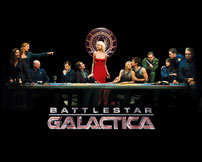
Fig. 2: Not the Battlestar Galactica that many expected.
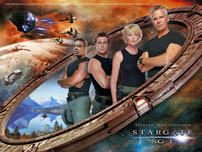
Fig. 3: Sci-Fi started broadcasting Stargate SG-1 in June 2002 after its fifth season.
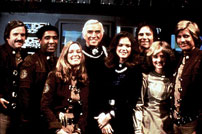
Fig. 4: The original Battlestar Galactica (ABC, 1978-9).
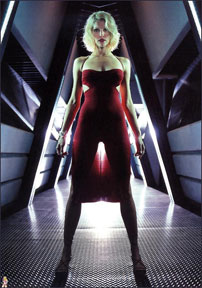
Fig. 5: She is certainly not a 1970s Cylon.
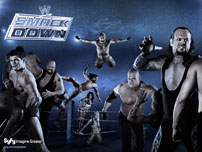
Fig. 6: The renamed SyFy channel has shown Professional Wrestling since at least 2006, and in 2010 moved Battlestar Galactica related programming from its traditional Friday night location to make room for even more.
|
|
| |
A Postfeminist Universe
One of the clearest changes from the original series is the changed genders of some of the main characters, made simpler by retaining the original names as newly constituted pilot call signs. Thus, Katee Sackoff takes over Dirk Benedict’s cigar-smoking, bar-brawling role as Starbuck, now Kara ‘Starbuck’ Thrace (fig. 7) and retains much of the character’s bravado. The character of Boomer also morphs into Sharon ‘Boomer’ Valerii (Grace Park), another pilot, contributing to the number of women in prominent roles in both the military and political leadership, from Admiral to President of the Colonies. The intermingling of the sexes, with shared quarters, lavatories and showers is reflective of other postfeminist universes in sf, like that depicted in the 1997 film version of Robert Heinlein’s Starship Troopers (although here, on basic cable, nudity and explicit sexuality are concealed, and even cursing curtailed to the common refrain of ‘frak’, picked up with new dimensions and frequency from the original, broadcast tv, series).
The changing of characters’ genders created some controversy, which simply highlights the nature of BSG in relation to its historic counterpart. One of the biggest critics of the new Starbuck was Benedict himself, who lamented a time when ‘men were men’ (Kungl 2001, p. 201). The universe of BSG, however, doesn’t recognize those kinds of roles assigned by gender. Starbuck earns respect for her ability to fly and ‘tough guy’ attitude, and no one questions that it was a woman. President Laura Roslin (Mary McDonnell), the previous Minister of Education of the 12 colonies before the attacks, is criticized for being a school teacher, not a woman (fig. 8). She furthermore commands immediate respect from nearly all who come into contact with her, based on her political, leadership and interpersonal skills, including notably by Lee ‘Apollo’ Adama (Jamie Bamber), son of the commander of the Galactica despite being asked to assert his own authority as a Captain aboard a military vessel. Once again, as Benedict notes, BSG represents a ‘complete change in the politics and mores of today’s world as opposed to the world of yesterday’ (Kungl 2008, p. 201). Whether or not one agrees that today’s world is a world without gender bias, the post-apocalyptic universe in BSG is such a postfeminist world, dismissing typical gender distinctions and rendering rank and personal characteristics as the markers of identity. |
|
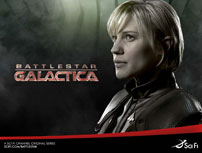
Fig. 7: Kara ‘Starbuck’ Thrace (Katee Sackhoff).
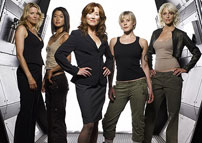
Fig. 8: Battlestar Galactica is populated with a number of strong women, in both races. |
|
| |
Blurring the Lines of Identity
Battlestar Galactica tells the tale of the invasion, and near annihilation, of the human population of a series of worlds at the hands of their cyborg creations, the Cylons, yet, throughout the series, the lines between Cylon and human are distinctly blurred. For example, by looking specifically at the characters of Sharon (fig. 9) - in their two distinct individuals Boomer and Athena - one can see their attempts at understanding their own identity, first perceived as innate, then through comparison with the humans, and finally in a postmodern, and posthuman, understanding which purveys the entire series.
Initially, Boomer is a Raptor pilot assigned to the Battlestar Galactica. Her identity is wrapped up in that of the military, and by all accounts she is a fine officer. The show reveals, however, that Boomer is a secret agent of the Cylons, and a Cylon herself (despite her lack of knowledge of this state). The audience is cued into this development by the introduction of multiple characters played by the same actor, multiple copies of a single model of Cylon, and Boomer herself is revealed to be a Cylon at the end of the miniseries, which serves as a backdoor pilot to the television series. Boomer herself comes to understand the development after she attempts to assassinate Commander Adama, triggered through encoded programming unbeknownst to Boomer. Although the audience can presumably tell the difference between the humans and Cylons, on a diegetic level no human character can tell the difference with any authority. There seems to be no epistemological method to determine the difference between a Cylon and a human, despite considerable early effort made at creating a test, reminiscent of similar epistemological tests in films like The Thing and Blade Runner (both 1982) (fig. 10).
Despite the described robotic nature of the evolved humanoid Cylons, they are made of organic material and are physically indistinguishable in every way. This is clearly shown in one of the numerous parallel scenes when Cally Henderson (Nicki Clyne) assassinates Boomer, acting in just as programmatic a method (unthinking, seemingly out of character and out of her own control) as Boomer had earlier. As Boomer falls to the ground, a close up of her blood dripping onto the floor instils in the audience a sense of Boomer’s own organic nature, and subverts the human/robot dichotomy that had been propagated primarily through rhetoric and propaganda among the crew. These figures are both created and machines, but at the same time produced through strictly biological matter and have emotion, feeling and thought. Matthew Gumpert argues that they are essentially “Haraway’s cyborgs: hybrid beings, both human and machine, and therefore neither human nor machine, whose very ontological indeterminacy represents a challenge to the old essentialist notion of identity” (2008, p. 147).
This Cylon/human distinction is further blurred through the relationship between Athena and Karl ‘Helo’ Agathon (Tahmoh Penikett), initiated while they are stranded on Caprica in the first season. Caprica, at this point, is a post-apocalypic waste land, a planet which was once central to human civilization destroyed by a Cylon nuclear attack. Helo encounters Athena, who he assumes is a fellow crew member from Galactica on the planet. Both Helo, who is physically separated from his ship and other humans altogether, and Athena, who is sent by her fellow Cylons on an undercover mission to find out what Helo knows, are separated from their own cultural context. This is particularly important for Athena, as she is forced to exist as an individual, in a race of individuals, despite coming from a culture of collectivity. As Robert Moore notes, “when we first meet her, Sharon is a member of a culture that does not tolerate the individual” (2008, p. 107), similar to the Borg from Star Trek: The Next Generation (1987-1994) (fig. 11).
Whether or not the Cylons represent cyborgs, or are metaphorical stand-ins for culturally distinct humans, they still come to represent the Other for the human characters within the series, with whom the audience presumably tends to identify. Yet, that remains true only as long as the Cylons don’t take on individual identities and characteristics. The series opens with several Cylon characters having relationships with human crew members, specifically Boomer and the Six model that comes to be called Caprica Six. In reaction to more individualized experiences, they develop individual traits that later in the series threaten Cylon society altogether. What is more striking, however, is that the line between Cylon and human is completely blurred through these interpersonal relationships. Athena’s ability to express emotion, shown to be genuine, and betray her people, demonstrates that the cyborg creation has evolved to the point of being indistinguishable from humans. Furthermore, they are reproductively compatible, as their relationship produces a daughter, Hera (Alexandra Thomas/Iliana Gomez-Martinez). The identities Helo and Athena thought existed prior to their relationship, and their reevaluated selves in reaction to each other, fail to maintain the Cylon/human dichotomy, showing that the difference between those species is impossible to determine. As such, using the category of human and Cylon (at least when referring to the evolved version) ceases to be meaningful, demonstrating a postmodern approach to subjectivity.
Effacing the Differences
The series, as it progresses through the seasons, also provides parallels taking away any other distinguishing characteristics between the species. Originally, the Cylons possessed a type of reincarnation, downloading, in which their identities were maintained and passed on to other versions of themselves (there are multiple copies of each of the 12 humanoid Cylon types). This is the way that Athena had the memories of Boomer’s affection for Helo before they were on Caprica, for example. Yet, this ability is removed later in the series, rendering them more human. At the same time, however, Starbuck, who dies at the end of the third season, is resurrected in season 4 as a type of Angel, demonstrating that reincarnation and resurrection (even on the earthly plane) are not exclusively Cylon features. |
|
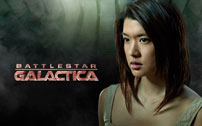
Fig. 9: The Sharons are the generic name for the Number Eights (the eighth of the twelve human-like cylons). There are two specific Sharons delineated in the series, Lt. Sharon ‘Boomer’ Valerii and Sharon ‘Athena’ Agathon (both played by Grace Park), which I will specifically refer to by their call-signs, Boomer and Athena. Athena, a call-sign this individual only receives later in the series, retains the memories from Boomer’s experience on Galactica, so the identity process is known to her on Caprica late in the first season. Some scholars distinguish the two characters as Galactica-Boomer and Caprica-Boomer, or simply Boomer and Sharon.
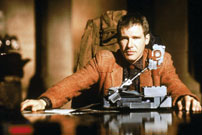
Fig. 10: Deckard setting up Blade Runner’s famous Voigt-Kampff test used to determine the status of potential ‘replicants’, using emotional response.
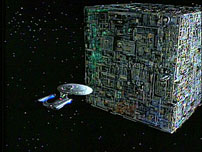
Fig. 11: The Borg first appear in the second season, in episode Q Who?. Although they are a cybernetic race that functioned as a collective, similar to the Cylons, they always retained distinctly robotic physical features. |
|
| |
Similarly, early in the first season Gaius Balter (James Callis) is shown conversing with a version of one of the Sixes (fig. 12). This manifestation, which is never fully explained, continues throughout the series, with the implication that either Balter is himself a Cylon and the audience is being shown a means by which the Cylon collective is communicating with him, or that he is simply delusional and has psychologically created an image of the Six (a version of which he had been having an affair with for some time before the destruction of Caprica), with whom he was presumably in love. The later explanation (and only likely one after we learn the identity of all 12 humanoid Cylons, which does not include Baltar) would allow for this to be an isolated component, dealing only with Baltar. But later in the series, this concept is also paralleled, as Caprica Six (the reincarnation of the Six with whom Baltar had the affair) also has a manifestation of Baltar, demonstrating that the Cylons too can have psychological damage and that their brains work in precisely the same way as the humans.
Thus, rather than focusing on otherness, as much of sf does, BSG presents us with a world in which difference, especially those characteristics typically used to identify races and genders, are rendered indeterminate. There becomes no epistemological, or ontological, means by which to categorize the Cylons and the humans, just as the generic lines that the series operates under are also blurred. This is not your father’s sci-fi, where the aliens are beaten back and the world saved, but a new frontier in which the aliens, or here the cyborgs, turn out to be ourselves. The final scene of the series ends with cooperation, with Cylons and humans landing on Earth together, spreading out to populate the planet (together, as Hera’s existence has demonstrated is possible), and we further learn that this is not the future, as much as it seems to predict our own relationship with technology, but the entire series is set in the past. Thus, we are all the products of this elided dichotomy, we are all both Cylon and human, with more questions than answers at the end. This is not your father’s sci-fi, it’s better. |
|

Fig. 12: There is a special connection between Gaius Baltar, genius and scientist, and one of the Sixes, who has come to be known in the scholarship as Baltar’s virtual Six. |
|
 |
 |
 |
 |
 |
|
 |
 |
 |
| |
Facts
Battlestar Wiki (last visited 25 May 2012).
Gumpert, Matthew. ‘Hybridity’s End.’ Cylons in America: Critical Studies of Battlestar Galactica. Ed. by Tiffany Potter and C.W. Marshall. (New York: Continuum, 2008). Pp. 143-155.
Kungl, Carla. ‘“Long live Stardoe!”: Can a Female Starbuck survive?’ Cylons in America: Critical Studies of Battlestar Galactica. Ed. by Tiffany Potter and C.W. Marshall. (New York: Continuum, 2008). Pp. 198-209.
Moore, Robert W. “’To be a person’: Sharon Agathon and the Social Expression of Individuality.” Cylons in America: Critical Studies of Battlestar Galactica. Ed. by Tiffany Potter and C.W. Marshall. (New York: Continuum, 2008). Pp. 105-117.
Picarelli, Enrica. ‘Between Allegory and Seduction: Perceptual Modulation in Battlestar Galactica.’ Scope: An Online Journal of Film and Television Series 22 (2012).
PR Newswire. ‘2003: The Year of Sci-Fi; Sci-Fi Channel Celebrates its Best Year Ever.’ (last visited 25 May 2012).
PR Newswire. ‘Universal Home Video declares 2003 the Year of Battlestar Galactica.’ (last visited 25 May 2012).
Suvin, Darko. Metamorphoses of Science Fiction. (New Haven: Yale UP, 1979).
See also Flow TV’s special issue on Battlestar Galactica (vol. 7. no. 14, 2008). |
|
|
|
|
 |
 |
 |
 |
16:9 - juni 2012 - 10. årgang - nummer 46
Udgives med støtte fra Det Danske Filminstitut samt Kulturministeriets bevilling til almenkulturelle tidsskrifter.
ISSN: 1603-5194. Copyright © 2002-12. Alle rettigheder reserveret. |
11 |
|
|
 |
 |
|
|